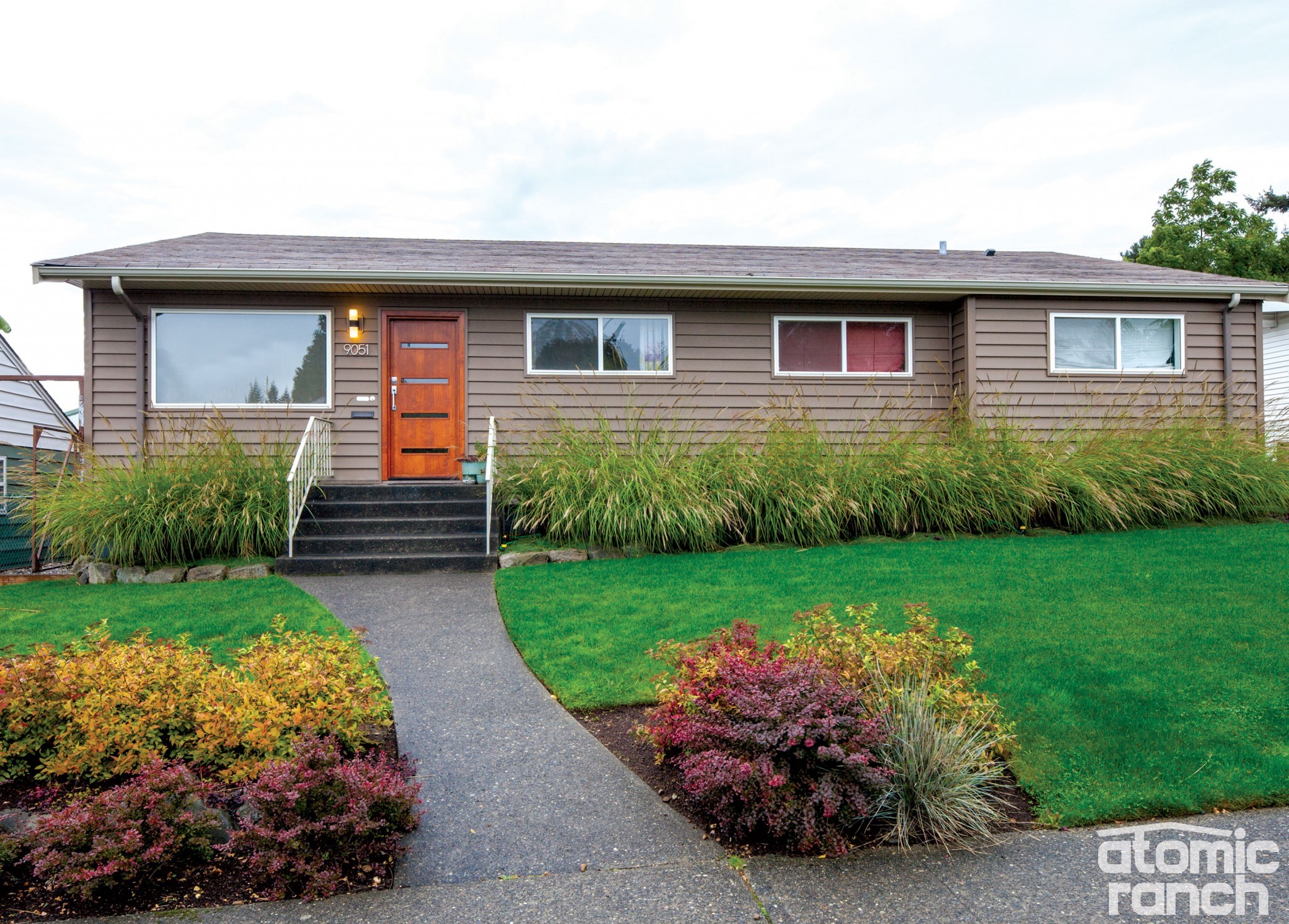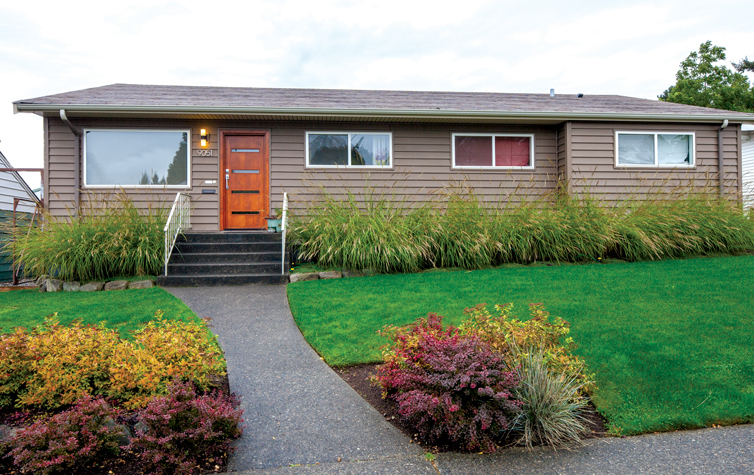
Moving from L.A. to Seattle for jobs in 2008, Alison Walker and Kevin Eustice ended up living in a dank granny flat during a winter when the city got its fair share of rain and 23 inches of snow. Ready to buy a house, they looked and looked for three or four months with absolutely no luck.
“The real estate market was trending down, but sellers were in denial,” Walker, 35, says. “We put in offers and people would just laugh at us. When we went to an estate sale for this home, we said, This place is a pit; we would never live here! In retrospect, famous last words, right? This house was the right price and we ended up with it—but it was far from our dream home.” Their West Seattle neighborhood was considered transitional six years ago, and consists of bungalows and ‘war boxes’—a somewhat derisive term for boxy postwar tract homes—built between 1955 and 1965.
Coming from sunny Southern California, the couple was desperate to get out of the depressing basement apartment. “We weren’t scared of putting in sweat equity,” says Eustice, 37, a software engineer at Google. “There was no landscaping except creosote-soaked railroad ties and a dandelion-infested dead lawn. It had a small, dark, floor plan with the living and dining areas separated by a wall. It was carpeted throughout, and there were nicotine stains up and down the walls. A cat had lived in the half bath for probably 10 years.”
“Our home looked like somebody had lived hard in it,” his wife adds. “The previous homeowner had done some upgrades—covered flower-power wallpaper with ’70s
paneling in the kitchen. Every time we took something down, there was something worse underneath.”
Uncovering Seattle’s Mysteries
Find out what the couple uncovered in their renovations and how the house developed their own version of modernism in Part 2!












